Share
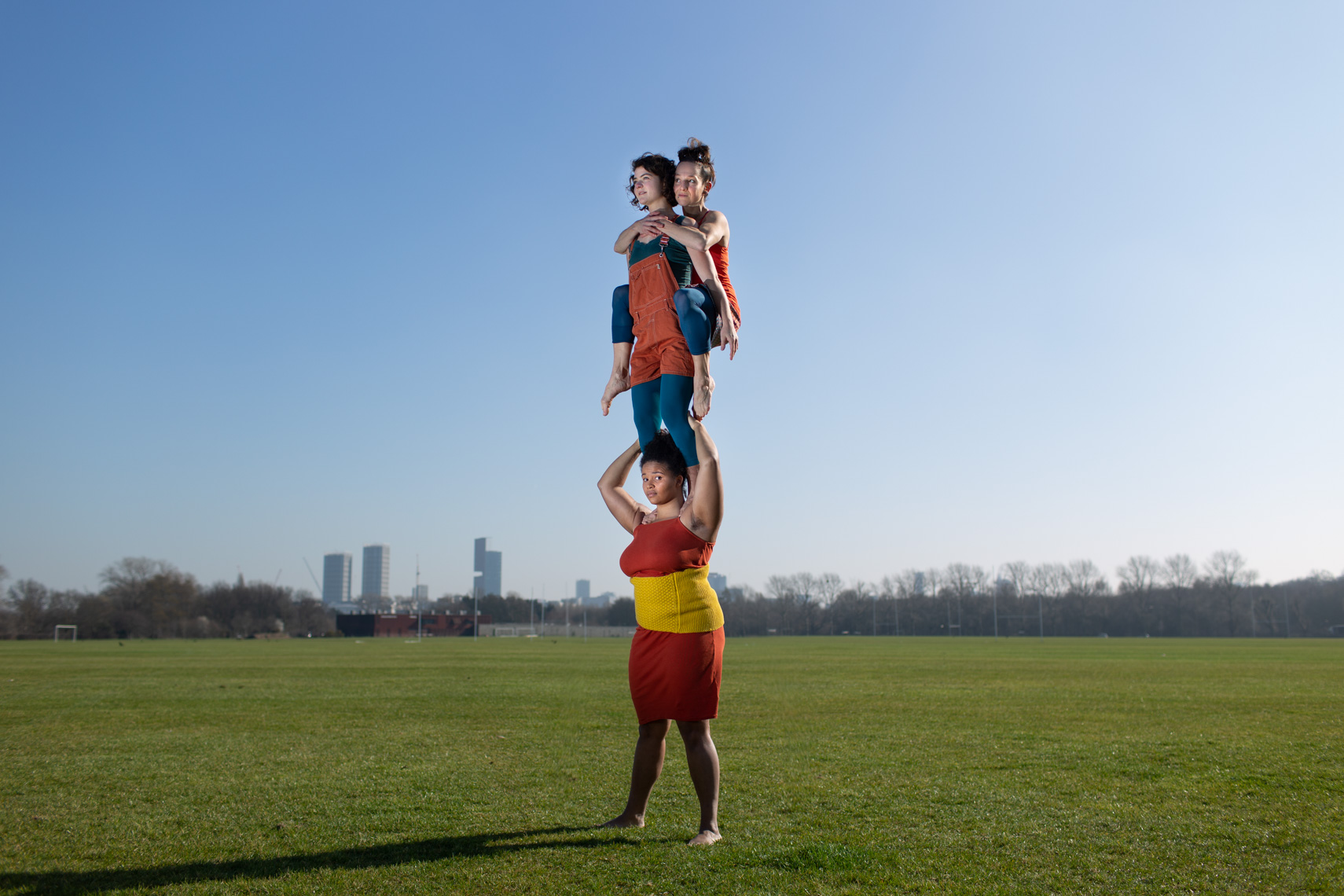
Outdoor Arts (also known as Street Theatre, Street Performance and Street Arts in Europe) is work that is created mainly for outdoor spaces ~ streets, town squares, parks, beaches and rural landscapes. It also includes work in the urban landscape such as in shopping centres, in disused buildings and on the outdoor surfaces of buildings as well as work that takes place under canvas – such as a circus tent.
Street performances can be intimate or monumental, strolling or static. Performances play with words, images, movement, sound and light. Sometimes they tell stories, sometimes they share amazing physical skills, sometimes they try to unexpectedly disrupt the everydayness of public space, sometimes they offer playful worlds of wonder. Sometimes they do all of these things.
Just as there are many spaces in which Outdoor Arts productions can be presented, there are many different ways of presenting the show. The chosen format for a production impacts the way an artist approaches the work to achieve the desired audience response. Here are some examples of types of outdoor arts work.
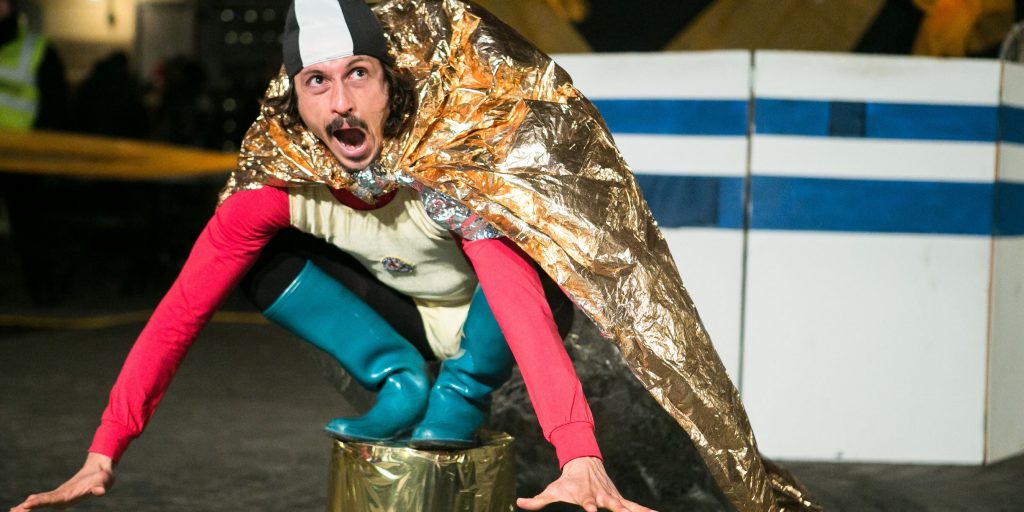
Camilo Acosta Mendoza Slovenia photo by Luka Dakskobler.
Buskers choose a public space to perform their show unannounced and not part of an existing event. Performers earn money by asking the audience to pay what they feel in cash, or cashless via a mobile app.
A licence is required from the local authority/landowner to busk in any town or public space. Email Bradford Council Licencing at licensing@bradford.gov.uk or view their Guide to Busking in Bradford.
For more information visit the Busking Project.
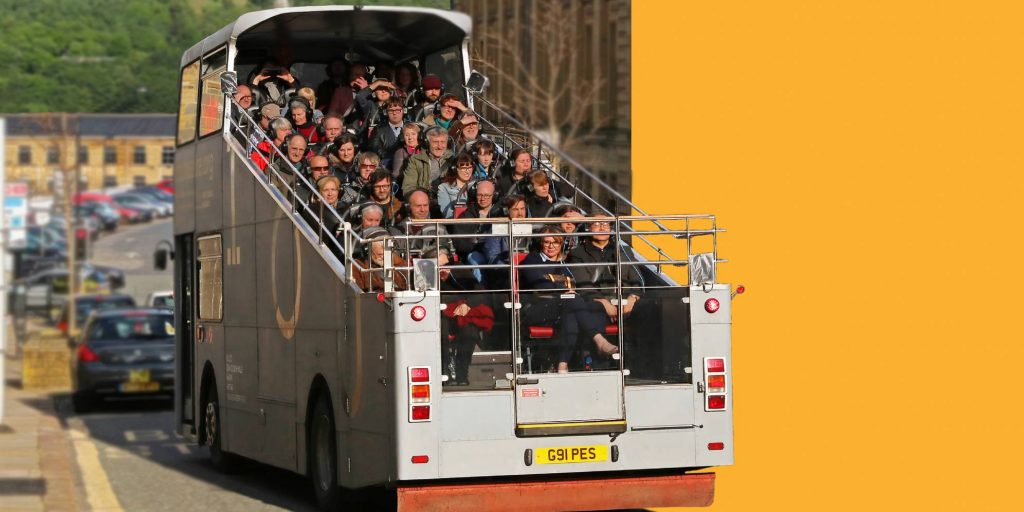
The Storytelling Bus by IOU Theatre UK 2019 Photo by JMA Photography.
These shows use the site as inspiration. The site can reveal historical or contemporary stories often the site itself forms part of the material of the show. Performances may include walkabouts, short static shows and installations which create a durational trail through which the audience can be guided by the performers or left to meander at their leisure.
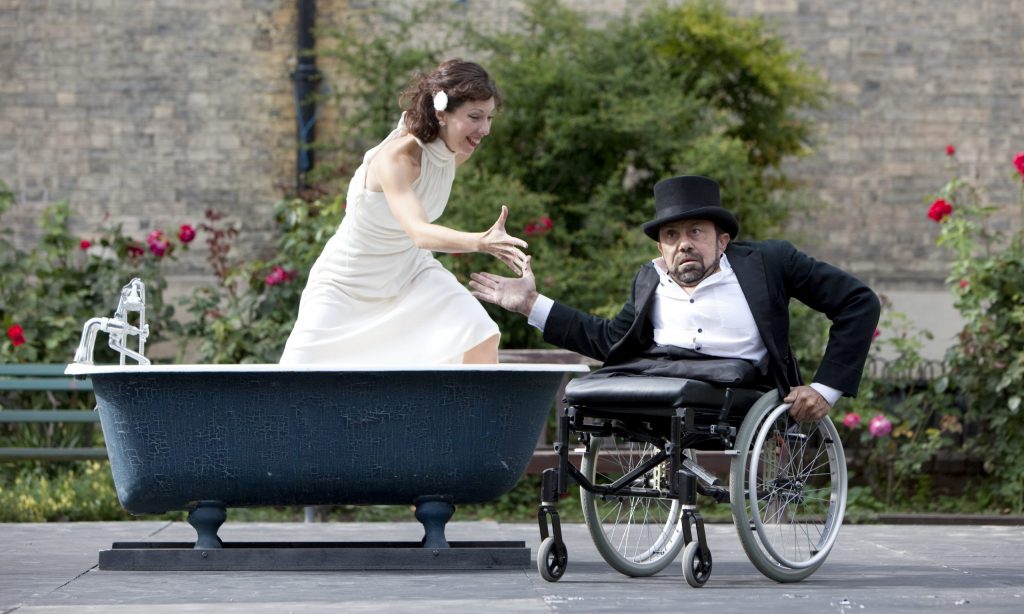
Bill and Bobby by Stopgap Dance Company
Static shows are crowd gathering performances with narrative and or skills for audiences of around 250. Small and medium scale shows may repeat twice or three times a day.
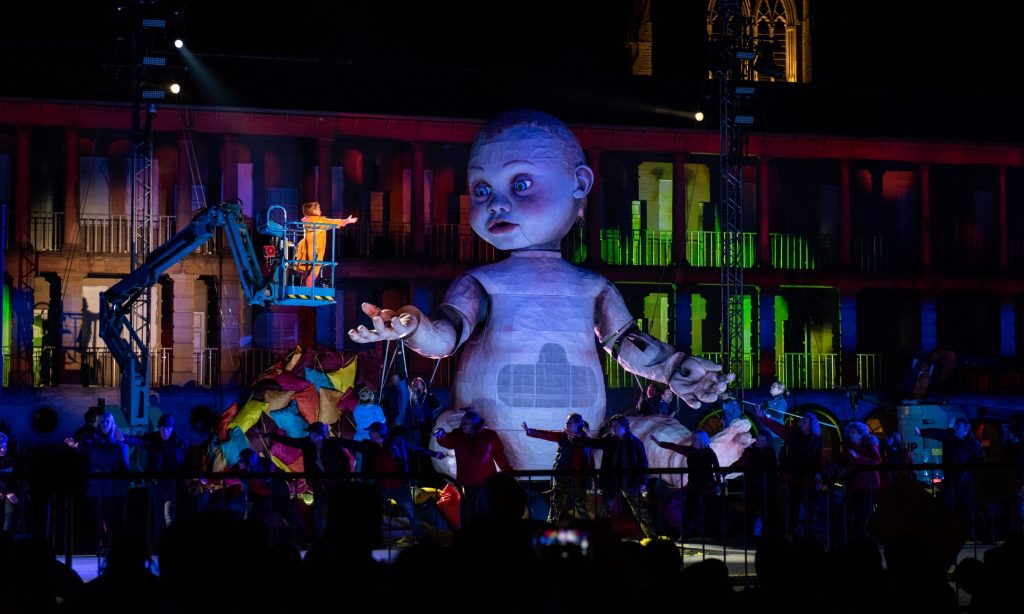
ZARA by Mind the Gap.
Large scale work includes crowd gathering arena shows that attract audiences of 500+ and are often performed at night using pyrotechnics, lighting, circus rigs, cranes, trucks, etc
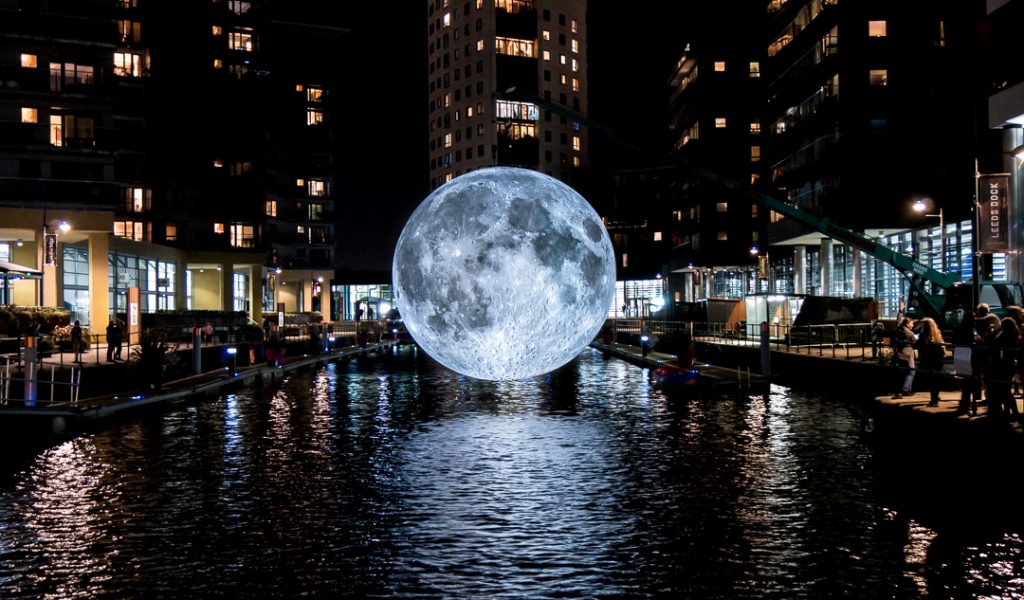
Museum of the Moon by Luke Jerram UK at Light Night Leeds, 2017. Photo © Leeds Living.
Installations are visual, sometimes interactive, touring exhibitions that, when installed, the audience can move in and around or view from a chosen location. Installation locations, like site specific work, they can include work in disused or unusual buildings which are not normally used for arts events, fire/light installations in the landscape and projection mapping on buildings.
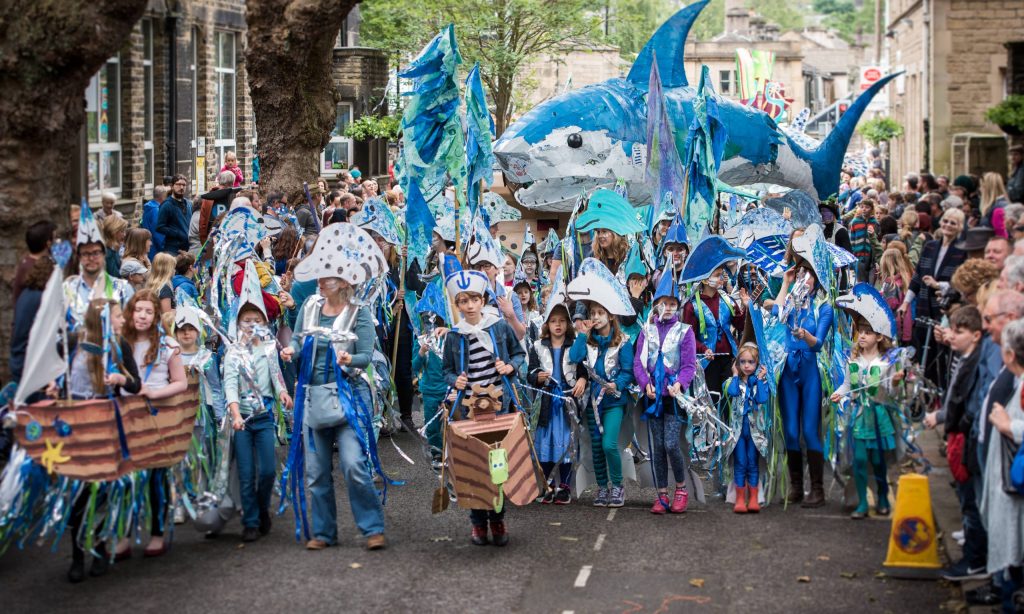
Handmade Parade 2017 photo by Darren Fleming.
Often created with communities, parades and carnivals are visual and aural works that move through the streets involving hundreds of people. The parade is sometimes divided into themed sections, allowing a particular community group to work on one section, and can include live music, sound systems, lanterns, giant puppets, dancing, stilts and colourful costumes.
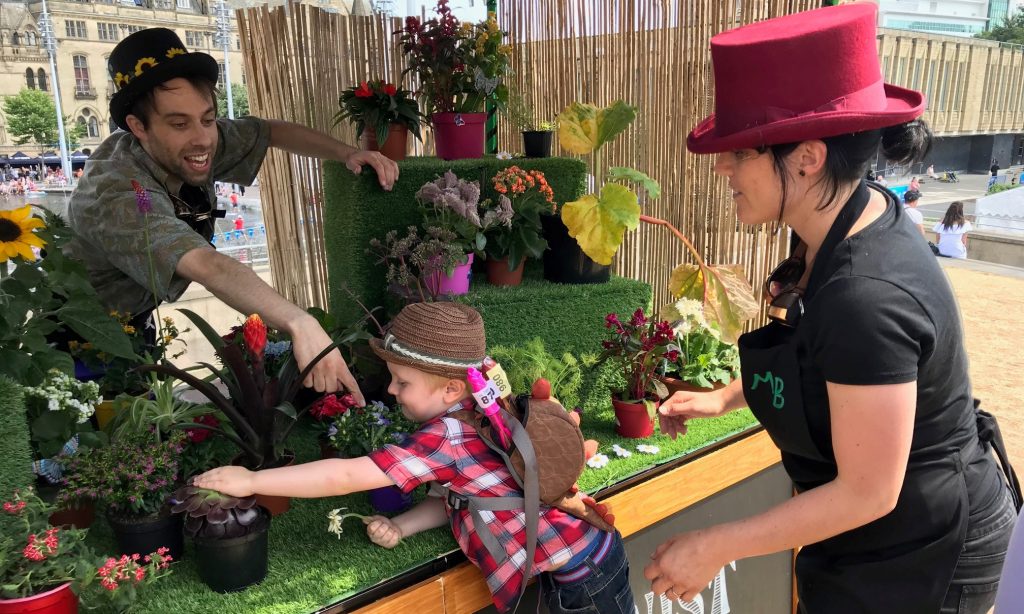
Musical Botanist by 154 Collective UK.
Intimate work includes work for audiences limited to 50 or under. These can be short shows that repeat many times during the day, or durational guided walks for 2 hours or more.
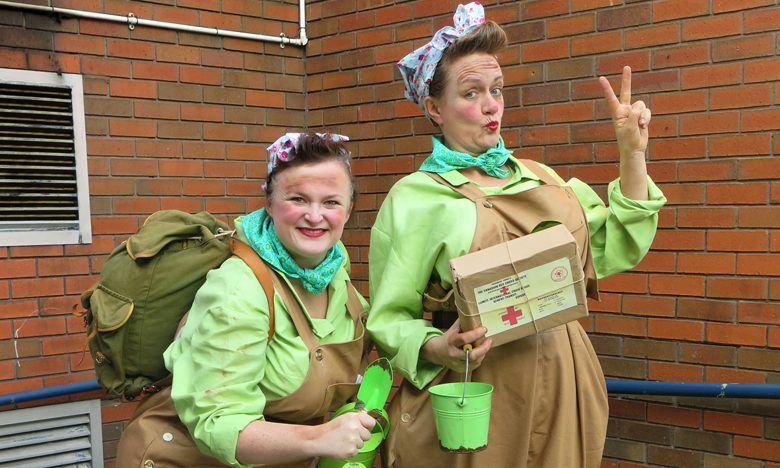
Land Girls by SWANK UK.
Walkabouts include interactive character work that moves through the streets and between audiences. This type of work can be improvisational, with performers in roles working off and with and audience and environment.


Contact us
Bradford Producing Hub
Assembly Bradford
20 North Parade
Bradford
BD1 3HT
Copyright © 2025 Bradford Producing Hub
Website designed and built by Out of Place Studio